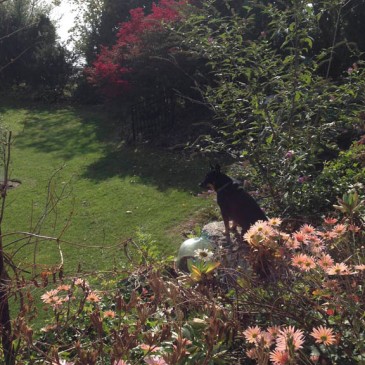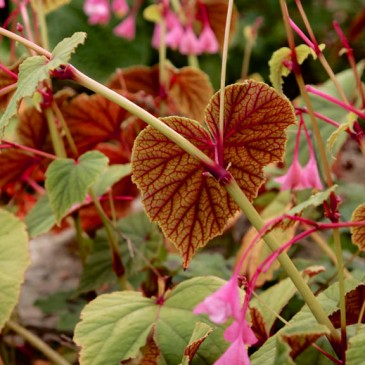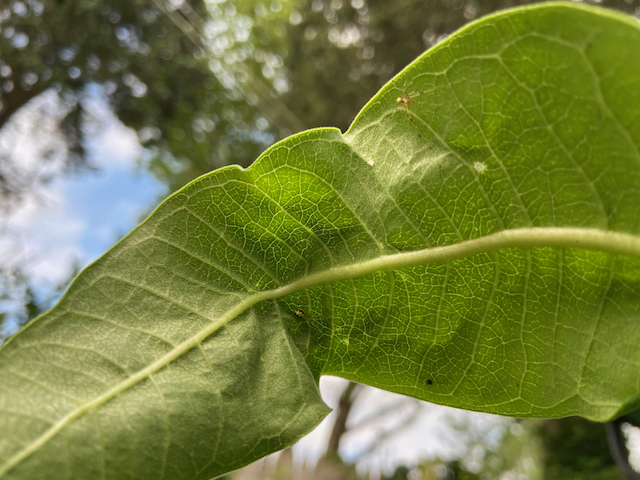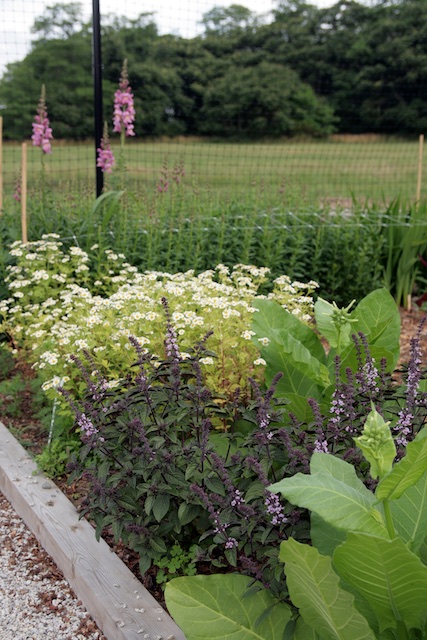(Originally published October 21, 2015 in East Bay/South Coast Life newspapers. Since writing it a light frost mostly-toasted the dahlias, the one African blue basil I left out for the bees, and my zinnias. The salvias didn’t blink.)
With below-freezing temperatures forecast for the weekend I should be spending every waking moment moving the rest of my container plants indoors. Digging and potting up as many tender perennials as I can wedge into the plantry and living room is on the list too. But I’m still enjoying this edge of fall and am more inclined to rhapsodize. I’m also not ready for my frost-tender salvias, cuphea, and African blue basil to quit working. They’re still feeding the bees — bumbles mostly but honeybees too on warm days, and offering a nutritious pit stop for any migrating hummingbirds that might catch their colors from a sky-high fly by. I’ll take my chances on leaving some outside to shrug off a light frost, if that’s all we get, and bloom on for a few more weeks. By the time you read this, you’ll know if I made a savvy or stupid choice. (Full disclosure: Of course I caved to frost-warning panic and filled the plantry to the gills. I left what I couldn’t fit outside to take their chances.)
The late garden, so wild and wooly, tall and half gone by, is my favorite. (As always, I reserve the right to change my tune come April and over again May through September.) Seedpods of swamp milkweed (Aslepias incarnata) and butterfly weed (A. tuberosa) have split at the seams to release great clouds of silk capable of carrying their packages miles on a decent breeze. – I spotted some floating in Bristol harbor the last time I was out on the water. Harlequin glory bower’s (Clerodendrum trichotomum) lipstick-red bracts, which were so recently puckered around fragrant white flowers, have begun to display indigo-blue berries instead. I love the black eyes of black-eyed Susans much more now than when they were ringed in gold eyelashes.

Harlequin glory bower (Clerodendrum trichotomum)

lacy aster and black-eyed Susan seedheads
Meanwhile, dahlias, Japanese anemone, asters, and chrysanthemums offer fresh-as-daisy counterpoints to the seedheads and tatters of almost everything else. I allowed a weedy little white aster to grow in my garden. I’m sure it blew in and don’t know its name (might be hairy white oldfield aster, Symphyotrichum pilosum var. pilosum) but its thin stems and minuscule leaves and buds never annoyed me or got in the way, so I left it here and there, and I’m glad I did for the way its branches of fingernail-sized flowers hover like a lace veil over the garden’s shoulders.
My favorite chrysanthemum, Sheffield pink, is a perfectly hardy old-fashioned perennial completely unlike the potted muffins offered at every roadside stand and nursery. I’m tempted daily by those but they can’t hold a jack-o-lantern candle to Sheffield pink. Its dusty apricot-pink petals are as long and lax as the plant’s stems and the whole picture is as graceful as a loose-limbed ballet dancer. Alas, the patch I started with has been crowded out of my borders, and I’m forced to enjoy it in others’ gardens.

Bazil and Sheffield Pink chrysanthemums in a friend’s garden

Begonia grandis in a friend’s garden
I also have to venture out to witness the spectacle of hardy begonia (Begonia grandis). Those of us who decorate our living rooms with rhizomatous begonias can’t help but be enchanted by a begonia (tuberous in this case) that can inhabit our garden without requiring winter shelf space. We just have to be willing to allow it room, in moist-ish shade or a dapple, to grow without overwhelming competition from neighbors (impossible conditions to provide in my burst-seams garden). By the time it makes its presence known in late summer, lopsided heart-shaped olive-green leaves reversed in burgundy, will catch fall’s low sun to reveal deep red veins. Bazooka-pink, or more rarely white, dangles of clamshell flowers through September and October would almost be beside the point if they didn’t add to the plant’s appeal. Better yet, they go to winged seed, ensuring, when happily situated, generations of fall extravagance.
Frost in the forecast is bittersweet. I’m not ready to let go of the season – it has gone too quickly as it always does. But I’m grateful for the warning to remind me to rhapsodize – and procrastinate – while I still have the chance.
Have you had a frost yet? What are your favorite fall flowers?








 I honestly don’t know why dandelions still get such a bad rap. We all know now how they provide the earliest and most consistent source of nutrition for honeybees and other pollinators. We like that they’re native (to almost everywhere in the world). And their young greens are packed full of vitamins and on every foodie’s menu.
I honestly don’t know why dandelions still get such a bad rap. We all know now how they provide the earliest and most consistent source of nutrition for honeybees and other pollinators. We like that they’re native (to almost everywhere in the world). And their young greens are packed full of vitamins and on every foodie’s menu.


